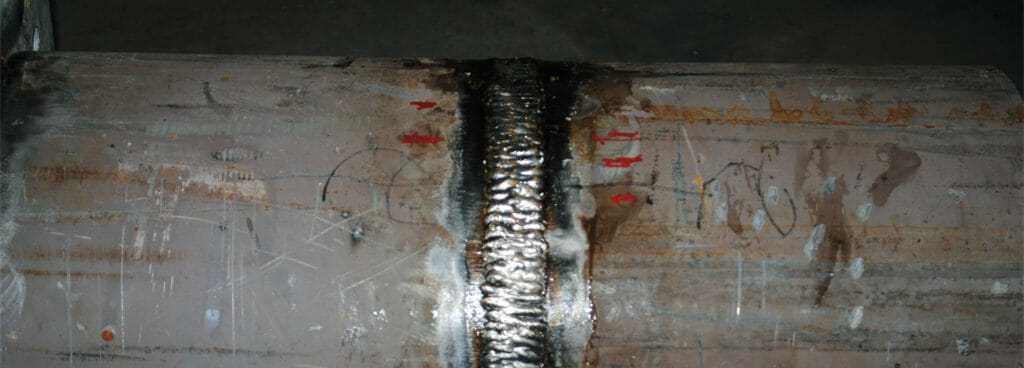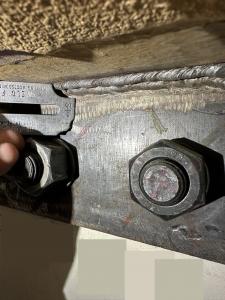How to Make Sure Quality with Welding Inspection Gilbert Arizona: Ideal Practices
How to Make Sure Quality with Welding Inspection Gilbert Arizona: Ideal Practices
Blog Article
Discovering the Significance of Welding Inspection in Industrial Applications: Securing Against Failures and Enhancing Long Life
Welding evaluation offers as a crucial line of defense in industrial applications, making certain the structural honesty and reliability of welded parts. By systematically recognizing problems such as porosity and insufficient blend, evaluations not just prevent failures however additionally extend the life expectancy of essential possessions. Sticking to market standards improves both security and functional efficiency; however, the ramifications of disregarding these practices can be extreme. As we check out the diverse advantages of routine assessments, it becomes noticeable that understanding these characteristics is not simply a matter of compliance but a calculated essential for durability and danger mitigation.
Duty of Welding Assessment
Welding assessment acts as an important secure in commercial applications, making sure that welded structures fulfill defined requirements of quality and safety. This process involves an organized assessment of welds to confirm their integrity, strength, and conformity with well established codes and requirements. The function of welding evaluation is complex, incorporating both visual assessments and non-destructive screening approaches, which may include ultrasonic, radiographic, or magnetic fragment testing.
Reliable welding assessment identifies potential concerns early, alleviating the risk of tragic failures that can emerge from insufficient welds. By guaranteeing that welds are executed according to create specifications, assessors contribute to the total structural integrity and long life of elements in crucial applications, such as stress vessels, pipelines, and architectural frameworks.

Usual Welding Problems

Among one of the most prevalent defects is porosity, identified by tiny gas pockets trapped within the weld metal. This occurs due to impurities or inappropriate securing gas, endangering the weld's toughness. One more considerable problem is incomplete blend, where the weld steel falls short to bond effectively with the base product, potentially resulting in structural weak points.

Fractures can also develop throughout or after the welding process, frequently attributed to thermal stress and anxieties or incorrect cooling prices. Furthermore, damaging, where the base steel is eroded along the weld grain, can compromise the joint and is often triggered by extreme heat input or inaccurate method.
Moreover, absence of penetration happens when the weld metal does not reach the origin of the joint, causing inadequate toughness. Comprehending these common flaws is essential for examiners and welders alike to make certain that welded frameworks satisfy safety and security and performance criteria, ultimately avoiding possible failures in industrial applications.
Advantages of Routine Evaluations
Normal inspections offer as a crucial secure in ensuring the dependability and longevity of welded structures. These analyses identify potential flaws and weak points that might endanger the stability of welds, permitting prompt removal go right here prior to concerns escalate. By executing an organized examination routine, organizations can substantially lower the threat of catastrophic failures that might lead to costly downtime, devices replacement, or also mishaps.
In addition, normal inspections add to enhanced quality assurance throughout the welding process. By adhering to a consistent evaluation routine, business can guarantee that their welding techniques fulfill well-known top quality standards and ideal techniques. This not just promotes a culture of responsibility however additionally urges constant enhancement among welding personnel.
On top of that, routine assessments assist in much better maintenance planning. By recognizing damage early, organizations can strategically schedule substitutes and fixings, lessening disruption to procedures. This positive method ultimately brings about extensive possession lifespan and boosted general productivity.
Lastly, a dedication to routine inspections can improve a company's track record in the industry. Customers and stakeholders significantly value companies that prioritize security and quality, consequently enhancing count on and possibly leading to boosted business opportunities.
Market Standards and Regulations
Abiding by market requirements and regulations is an essential facet of welding evaluation that enhances the advantages of regular examinations. These criteria, established by organizations such as the American Welding Culture (AWS) and the American Culture of Mechanical Engineers (ASME), offer a structure for ideal practices in welding processes, materials, and assessment strategies. Compliance with these policies makes sure that welds fulfill the required quality and security criteria, dramatically decreasing the danger of structural failings.
Regulative bodies like the Occupational useful content Safety And Security and Wellness Management (OSHA) further impose guidelines that protect workers and the environment during welding operations. By following these established standards, industries can improve the integrity of their frameworks and parts, ensuring they carry out as meant under various operational conditions.
Additionally, adherence to market standards promotes uniformity in quality assurance, promoting smoother communication amongst stakeholders and regulatory firms. This placement not just lessens obligation risks but also boosts the trustworthiness of companies in open markets. Welding Inspection Gilbert Arizona. Eventually, conformity with welding standards and laws is not merely a legal obligation; it is an essential investment in safety, efficiency, and long-term functional success
Future Trends in Welding Examination
As sectors continue to evolve, the future of welding examination is positioned to integrate sophisticated technologies that improve accuracy and efficiency. Among the most substantial patterns is the adoption of automation and robotics in assessment processes. Automated systems can perform examinations rapidly, reducing human mistake and enhancing throughput in making atmospheres.
Additionally, the assimilation of expert system (AI) and artificial intelligence formulas will make it possible for predictive analytics, permitting real-time assessments and proactive upkeep. By analyzing data from previous examinations, these innovations can recognize patterns that could suggest possible failures, therefore extending the life expectancy of bonded components.
Furthermore, non-destructive screening (NDT) techniques are expected to end up being extra sophisticated, using devices such as drones and autonomous cars furnished with cutting-edge sensors. Welding Inspection Gilbert Arizona. These improvements will certainly enhance the capacity to evaluate hard-to-reach or harmful locations without compromising safety and security
Additionally, find more info the fad towards digitalization will cause boosted information monitoring systems that facilitate better tracking, reporting, and compliance with industry standards. In recap, the future of welding examination is defined by technical improvements that assure to dramatically boost integrity, safety and security, and functional efficiency in various industrial applications.
Conclusion
In conclusion, welding evaluation serves a vital function in making sure the stability and longevity of bonded frameworks across various commercial applications. By recognizing flaws such as porosity and insufficient combination, routine evaluations play a significant role in threat reduction and quality control. Adherence to sector requirements and policies even more enhances functional security and reliability. As advancements in modern technology remain to develop, the future of welding inspection assures raised precision and efficiency, inevitably adding to the longevity of critical frameworks.
Welding examination serves as an essential line of defense in commercial applications, ensuring the structural stability and integrity of bonded parts.Welding evaluation offers as a crucial secure in commercial applications, ensuring that welded frameworks fulfill specified standards of top quality and safety and security. Ultimately, the function of welding examination is essential in promoting safety and security, boosting performance, and protecting financial investments in commercial framework.
These standards, established by organizations such as the American Welding Society (AWS) and the American Society of Mechanical Designers (ASME), supply a structure for ideal methods in welding processes, materials, and assessment strategies.In conclusion, welding evaluation serves a crucial feature in making certain the honesty and resilience of welded structures across various industrial applications.
Report this page